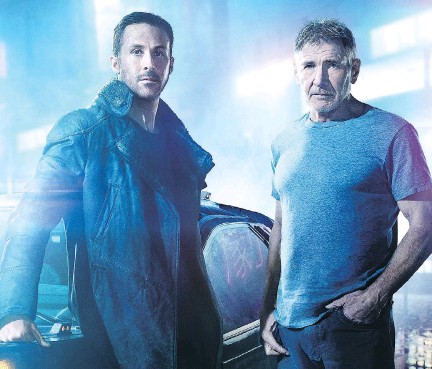BLADE RUNNER A CUT ABOVE
More spiritual successor than sequel
The term “sequel” has been sullied by a century of second, sixth and seventh parts. So let’s not call Blade Runner 2049 a sequel. Call it the spiritual successor to one of the greatest science-fiction stories ever told. And it lives up to that billing.
It is set not 32 years into our future, but 30 years into the future of the original Blade Runner, from 1982. That one took place in a 2019 with flying cars and robot “replicants” but without cellphones or the internet, and with a decidedly retro sense of fashion. In Blade Runner’s future, there is still a Soviet Union and Atari has an advertising budget big enough to buy the side of a skyscraper.
Some of that fictional 2049 may yet dovetail with our own. The weather continues to worsen — the omnipresent rain of Los Angeles occasionally cut with sudden snow squalls — and rising ocean levels mandate a huge seawall on the west coast.
But that’s just window dressing. The story this time involves a next-generation blade runner (Ryan Gosling) with the utilitarian name of K. Like Harrison Ford’s Rick Deckard from the original, he’s part of LAPD’s “retirement division,” tasked with killing older-model replicants that are trying to pass as humans.
The latest model, called a Nexus-9, has been created to be unswervingly obedient, although that’s a bit like saying your car’s GPS is unswervingly accurate. To err is replicant; to forgive, machine.
In the opening scene, K retires a Nexus named Sapper Morton (Dave Bautista). Before the replicant expires, it talks about having “seen a miracle.”

